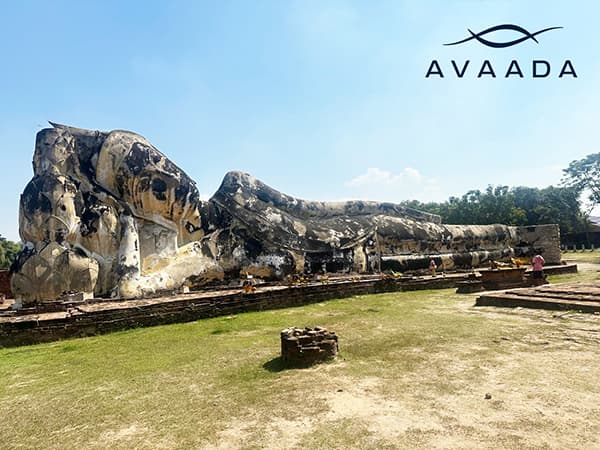Buddha Purnima, also known as Vesak or Buddha Jayanti, is the most significant day for Buddhists worldwide. This sacred occasion commemorates three pivotal events in the life of Gautama Buddha: his birth, his enlightenment (Bodhi), and his death (Parinirvana). Known as the Thrice Blessed Festival, Buddha Purnima is a day of profound spiritual reflection and celebration.
The Significance of Buddha Purnima
- Birth of Siddhartha Gautama: According to tradition, Siddhartha Gautama was born on the full moon day of Vaisakha in Lumbini (modern-day Nepal) around 563 BCE. His birth marked the arrival of a being destined to bring profound spiritual insights to the world.
- Enlightenment Under the Bodhi Tree: After years of ascetic practices and meditation, Siddhartha attained enlightenment at the age of 35 under the Bodhi tree in Bodh Gaya. This event transformed him into the Buddha, the “Awakened One,” and marked the beginning of his teaching journey.
- Parinirvana: At the age of 80, Buddha attained Parinirvana in Kushinagar, leaving behind the cycle of birth and death. This event signifies his final liberation from worldly existence and suffering.
Celebrations in Modern India
In India, Buddha Purnima is celebrated with great reverence. Pilgrims gather at key Buddhist sites such as Lumbini, Bodh Gaya, Sarnath, and Kushinagar to participate in religious activities, prayers, and meditation. Temples and monasteries are adorned with decorations, and devotees engage in chanting, offering alms to monks, and engaging in acts of compassion and kindness.


The Spread of Buddhism in Southeast Asia
Buddhism spread from India to various parts of Southeast Asia through trade, missionary activities, and the support of local rulers. The influence of Buddhism is deeply embedded in the cultural and spiritual life of countries like Thailand, Cambodia, Myanmar, Vietnam, and Laos.
- Thailand: Theravada Buddhism is the predominant faith in Thailand, influencing every aspect of life. Monasteries and temples play vital roles in both religious and secular education.
- Cambodia: Cambodia boasts a rich Buddhist heritage, with iconic structures like Angkor Wat symbolizing its spiritual significance. Despite historical challenges, Buddhism remains a core part of Cambodian identity.
- Myanmar: Myanmar is known for its devotion to Theravada Buddhism, with significant sites such as the Shwedagon Pagoda attracting pilgrims from around the world. Monks are highly respected and integral to social and spiritual life.
- Vietnam: In Vietnam, Mahayana Buddhism coexists with other traditions. Buddhist pagodas serve as centers for worship and community activities, reflecting a harmonious integration of spiritual practices.
Scientific Relevance and Spiritual Significance
Buddha’s teachings offer timeless wisdom that remains relevant today. His approach to understanding the mind through meditation is akin to a scientific exploration of consciousness. Modern research supports the benefits of meditation in reducing stress, enhancing emotional well-being, and improving overall mental health.
Spiritually, Buddha Purnima is a time for reflection on the Buddha’s teachings. It encourages the practice of mindfulness, compassion, and ethical living. The celebration of Buddha Purnima reminds us of the potential for enlightenment within each of us and the importance of pursuing a path of inner peace and wisdom.
The Three Approaches Towards Truth
There are three dimensions ordinarily available to approach the truth: power, beauty, and grandeur. These approaches create the scientist, the artist, and the prophet, respectively.
- The Approach of Power: Science
- Knowledge as Power: The scientific method seeks power through understanding and manipulating the natural world. Lord Bacon’s statement “knowledge is power” epitomizes this approach. Science has made humanity powerful enough to alter or even destroy the planet.
- Partial Truth: While science provides insights into the physical and measurable aspects of reality, it represents only a partial approach to truth.
- The Approach of Beauty: Art and Aesthetics
- Truth as Beauty: Poets, artists, and mystics like Jalaludin Rumi and Rabindranath Tagore view truth through the lens of beauty. This dimension values intuition, emotion, and the irrational aspects of human experience.
- Cultural Contributions: Religious traditions often express their devotion through art, enriching human culture and making the world more beautiful.
- The Approach of Grandeur: Spiritual and Religious Awe
- Truth as Grandeur: Prophets and spiritual leaders approach truth with a sense of awe and reverence for the universe’s vastness and mystery. Sacred texts like the Upanishads and the Vedas capture this sense of grandeur.
- Human Humility: This approach cultivates humility and recognition of the limits of human understanding.


The Rarity of Buddha
Buddha’s approach synthesizes all three dimensions—power, beauty, and grandeur—and transcends them. His method convinces the mind and, through that, reveals a message beyond the mind and reason. Buddha’s religion is supra-rational, not against reason but in continuity with it.
H.G. Wells aptly described Buddha as “the godliest and the most godless man in the whole history of man.” Buddha’s luminosity is unparalleled, yet he never spoke of God, soul, or self directly. He welcomed skeptics, encouraging them to explore and find truth through personal experience and method rather than belief.


The Path of Doubt and Faith
Buddha’s unique method involves addressing doubt through doubt itself, leading to a faith that is beyond belief. This faith is not against doubt but is the absence of doubt, achieved by fully exploring and exhausting skepticism. Buddha’s approach transforms doubt into a profound, mature, and childlike faith through personal journey and experience.
Reflection and Mantra
ॐ मुनि मुनि महामुनि षक्यमुनि स्वाहा | “Om and salutations to the wise Buddha with the greatest knowledge and wisdom. May I be free from suffering and be blessed with your compassion, love, and kindness.”
Wishing you all a very happy Buddha Purnima! This sacred occasion is celebrated with profound respect by millions of Buddhists around the world. In India, pilgrims flock to major Buddhist sites, such as Kushinagar, Sarnath, and Bodh Gaya, to engage in religious activities and offer prayers. One of the most revered mantras chanted on this day is:
“Buddham Sharanam Gacchami, Dhammam Sharanam Gacchami, Sangham Sharanam Gacchami.”
This Pali mantra translates to "I take refuge in the Buddha, I take refuge in the Dharma, I take refuge
in the Sangha," reflecting the core commitments of a Buddhist practitioner. May the spirit of Buddha Purnima inspire us all to cultivate peace, wisdom, and compassion in our lives.









